Are Shipping Containers Waterproof? Exploring Their Durability at Sea
Shipping containers are designed to be heavy-duty boxes primarily used for transporting goods across long distances on ships, trains, and trucks. Given their extensive use in maritime transport, it’s commonly assumed they offer significant protection against the elements, particularly water. The question of whether shipping containers are waterproof is an important consideration for anyone looking to use them for storage or as a part of a building structure.
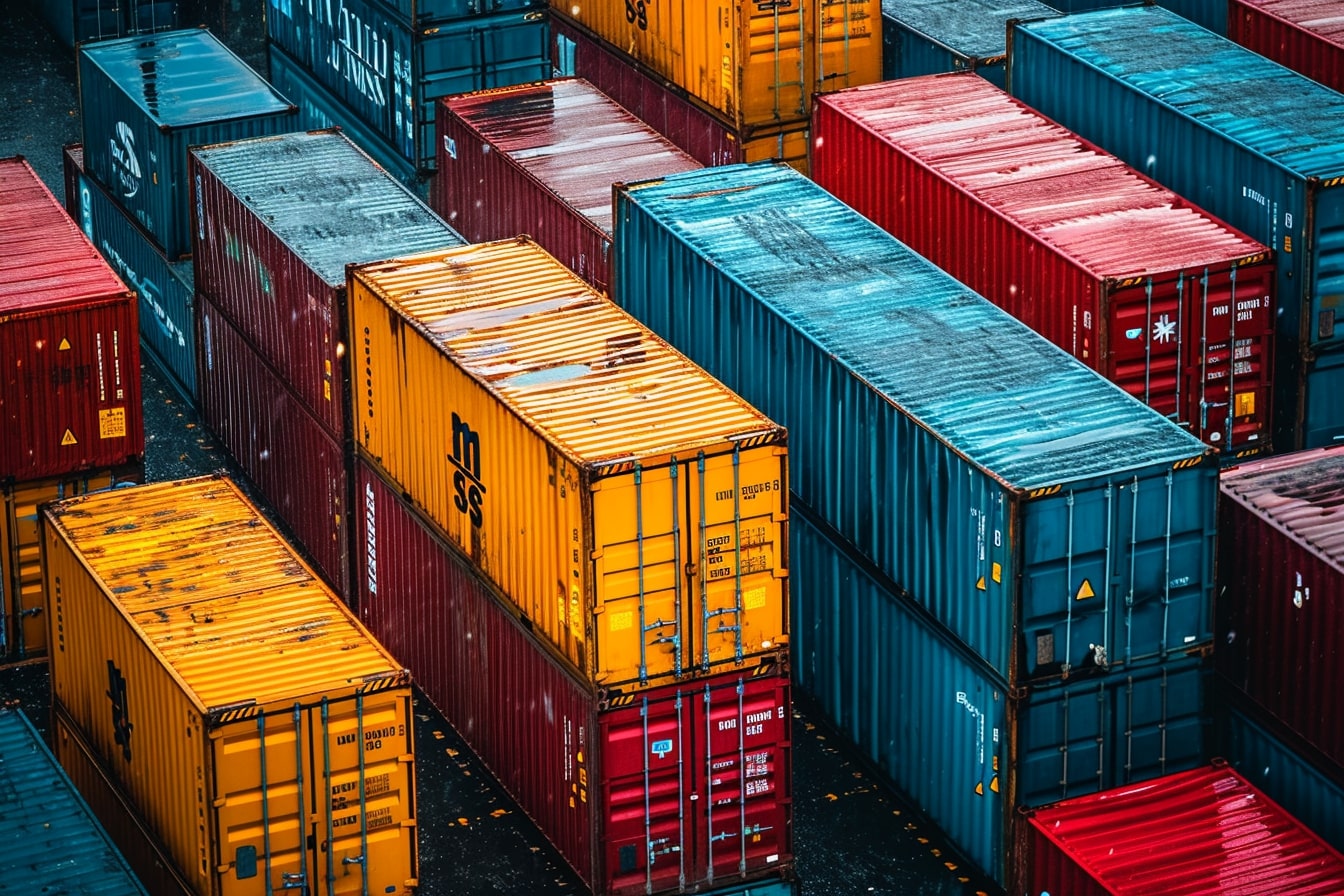
In general, shipping containers are crafted with a high degree of water resistance. Their steel construction and the rubber seals around their doors provide a strong barrier against moisture and water ingress. However, the term ‘waterproof’ can be somewhat misleading, as not all shipping containers offer complete immunity from water penetration. Factors such as age, condition, and maintenance can influence the level of water resistance.
The waterproofing of shipping containers is a subject of ongoing discussion. While new and well-maintained containers are likely to keep their contents dry under normal conditions, varying standards and definitions of what constitutes ‘waterproof’ mean that without proper inspection and sometimes additional modifications, absolute water-tightness cannot be guaranteed.
Design and Construction of Shipping Containers
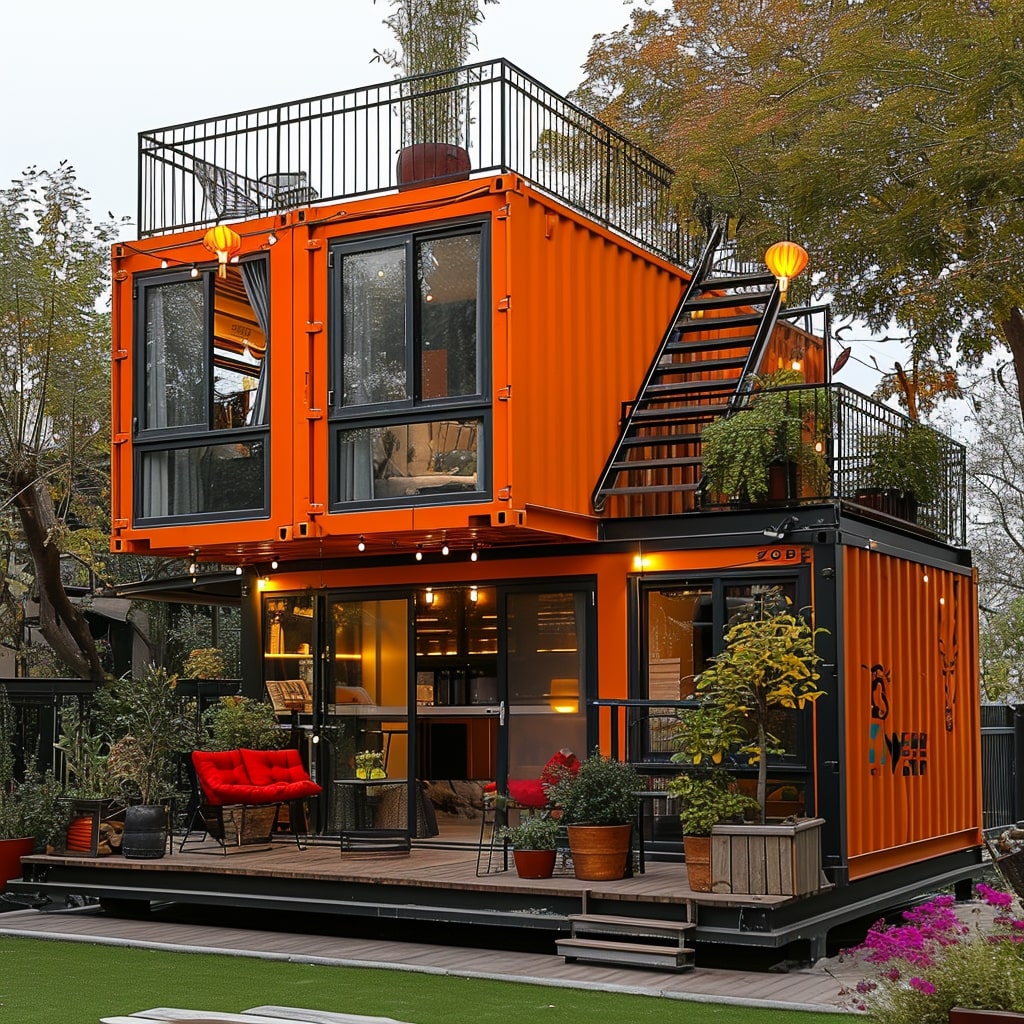
When discussing shipping containers, it’s essential to recognize that their ability to withstand rough conditions arises from their rigorous design and construction processes. Two critical aspects govern their sturdiness: the materials and structure, along with specific roof and wall features.
Materials and Structure
Shipping containers are predominantly constructed from corrosion-resistant high-grade steel, which contributes to their durability and longevity. The design typically includes a framework reinforced with sturdy reinforced corners, ensuring they can be stacked and handled without compromising structural integrity. Corrugated steel is usually employed for the side panels to improve their rigidity and strength against impacts and heavy loads. This corrugation not only adds to the aesthetic but also serves as a critical aspect of the container’s ability to bear significant weights and resist the elements.
Roof and Walls Features
The roof and walls of a shipping container are also highly significant in its overall design. Typically, they are made from the same corrugated steel material, aiding in water deflection and offering enhanced resistance to environmental stressors. The walls are often designed with an inclination to allow for water runoff, further helping to prevent water accumulation and potential leakage. Moreover, seals and rubber gaskets are strategically placed to inhibit water ingress, especially around doors and joining points, though these elements may require regular maintenance to retain their effectiveness.
Waterproofing and Watertight Integrity

The effectiveness of waterproofing in shipping containers hinges upon their watertight seals and the quality of waterproofing solutions applied. These elements are crucial in maintaining the integrity of the container against water intrusion.
Seals and Gaskets
Shipping containers rely on strong, durable rubber gaskets to seal their doors and prevent water ingress. These seals are positioned around the door edges, forming a watertight barrier when the doors are closed. Any compromise in the seal, whether from wear, damage, or improper installation, can breach the container’s watertight integrity.
Waterproofing Solutions
In addition to the gaskets, various waterproofing measures are implemented to protect shipping containers from the elements. These may include specialized coatings that provide an additional layer of protection. Such coatings are designed to repel water and are typically applied to the container’s roof and walls to prevent rust and corrosion, which can lead to leaks.
Durability Against Environmental Factors
Shipping containers are designed to withstand harsh environmental conditions; their durability depends on the quality of construction and the preventative measures taken against rust and condensation. These steel structures are specifically adapted to protect against degradation over time.
Corrosion and Rust Resistance
Manufacturers construct shipping containers using corrosion-resistant steel to enhance their longevity. The steel is typically coated with specialized paints that contain anti-corrosive properties, which provide a protective barrier against the elements. However, over time, chipped paint or damaged coatings can expose the steel, leading to rust spots and potential deterioration. Regular maintenance, including inspections and touch-up painting, can prevent rust from compromising the structural integrity of the container.
Handling Moisture and Condensation
To manage moisture and condensation within shipping containers, effective sealing and ventilation are crucial. Containers have tight rubber seals around their doors, which help to keep the interior dry. Moreover, some containers incorporate ventilation systems or desiccants to control the internal atmosphere, thus preventing condensation from accumulating and causing damage to both the container and its contents. Regular checks for leaks and adequate circulation are essential to keep these safeguards functional.
Potential Damage and Maintenance
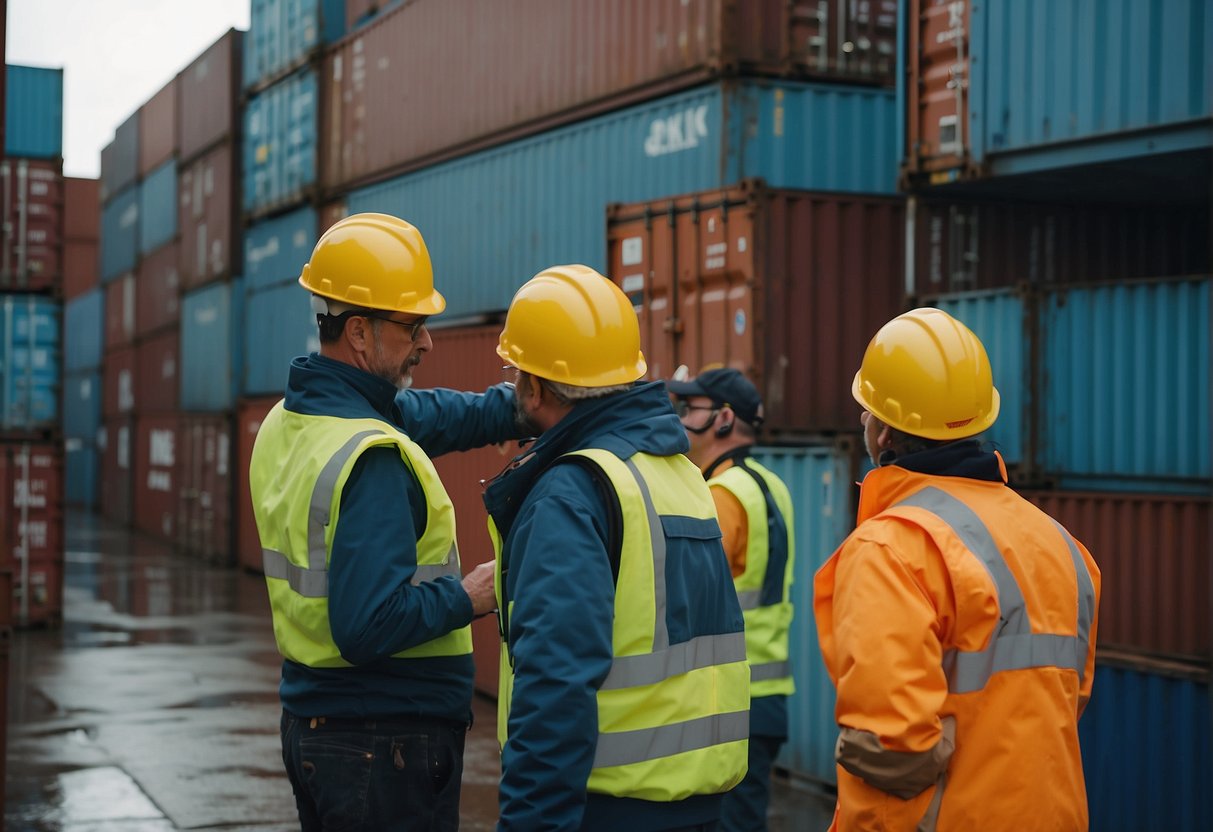
While shipping containers are built to withstand harsh conditions, they are not immune to damage. Regular maintenance is essential to preserve their structural integrity and water resistance.
Common Types of Damage
Shipping containers can suffer from various types of damage over time. Rust is a prevalent issue, especially when containers are exposed to salty air or water, leading to corrosion. Dents and deformations can occur from heavy impacts or mishandling. Another concern is the wear and tear of the door seals which can result in water leaks. Furthermore, the container’s roof can develop holes due to prolonged exposure to standing water or heavy loads being placed on top, compromising its watertight integrity.
Maintenance and Repairs
Effective maintenance procedures can significantly extend the lifespan of shipping containers. It is crucial to regularly inspect for rust and holes, and to perform immediate repairs to prevent further deterioration. Painting the container with rust-resistant paint can prevent corrosion. Sealant should be applied on a regular basis around doors and roof seams to prevent leaks. In the event of structural damage, professional repairs may be necessary to restore safety and functionality. For the container’s waterproofing features to remain effective, diligent maintenance must be a regular commitment.
Adaptability for Storage and Habitation
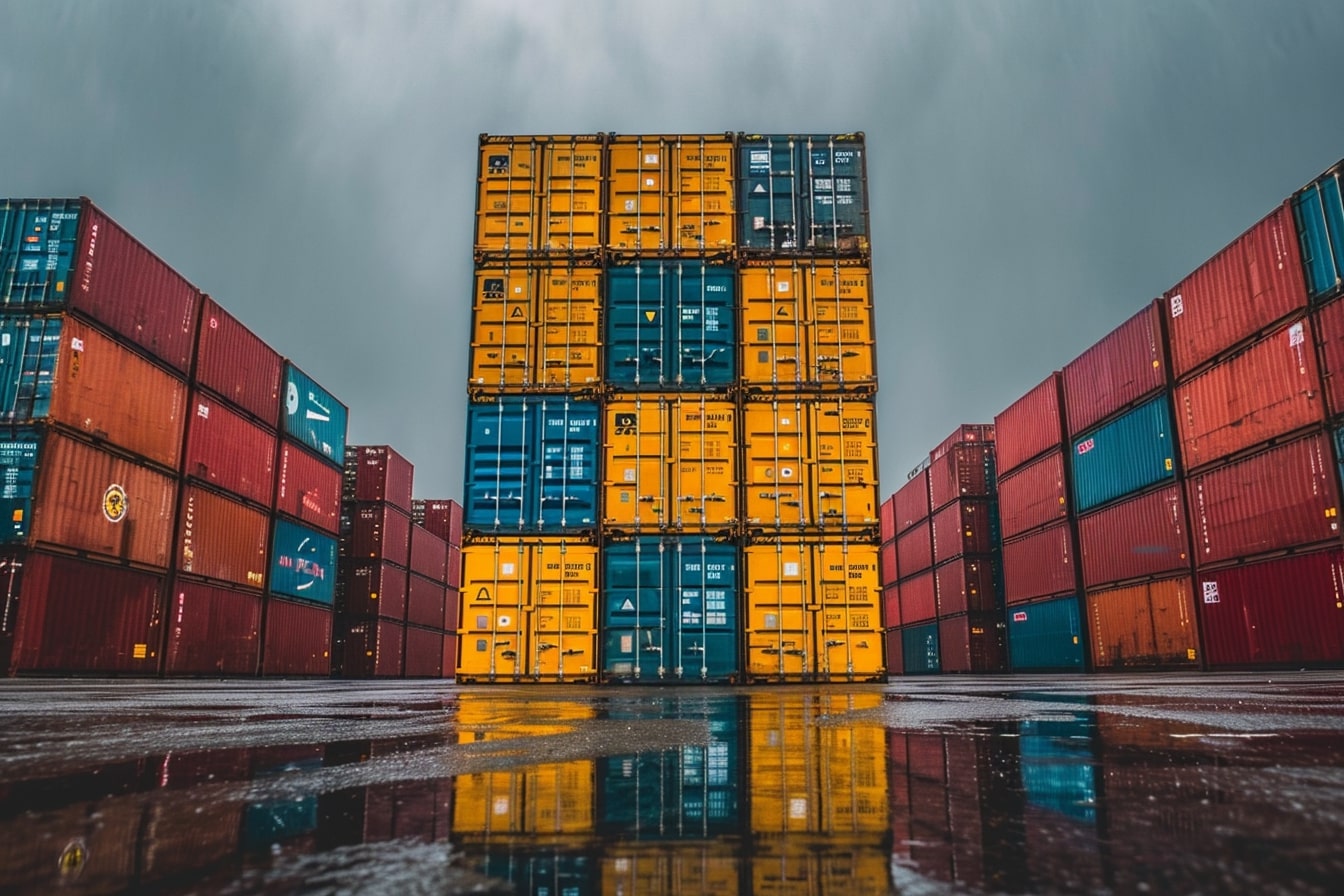
Shipping containers, with their robust construction, offer a versatile foundation for both storage solutions and habitable environments. They can be modified to create secure storage spaces or transformed into comfortable living and working areas with appropriate design considerations.
Adapting Containers for Storage
Shipping containers provide a sturdy and durable option for storing goods. To adapt a shipping container for storage, it is essential to consider the following:
- Insulation: To prevent condensation and maintain the goods’ integrity, insulation can be added.
- Ventilation: Implementing ventilation systems helps manage airflow and reduce the accumulation of moisture.
- Shelving: Installing shelving systems maximizes space and organizes stored items effectively.
Container Homes and Offices
Containers are increasingly used as bases for constructing homes and offices. Below are key factors when converting containers into living or working spaces:
- Insulation: Proper insulation is crucial for temperature control and comfort in a container home or office.
- Windows and Doors: Adding adequate windows and doors not only provides natural light but also improves ventilation.
- Utilities: Electrical wiring, plumbing, and HVAC systems are necessary for creating a functional living space.
Securing Cargo and Preventing Water Damage
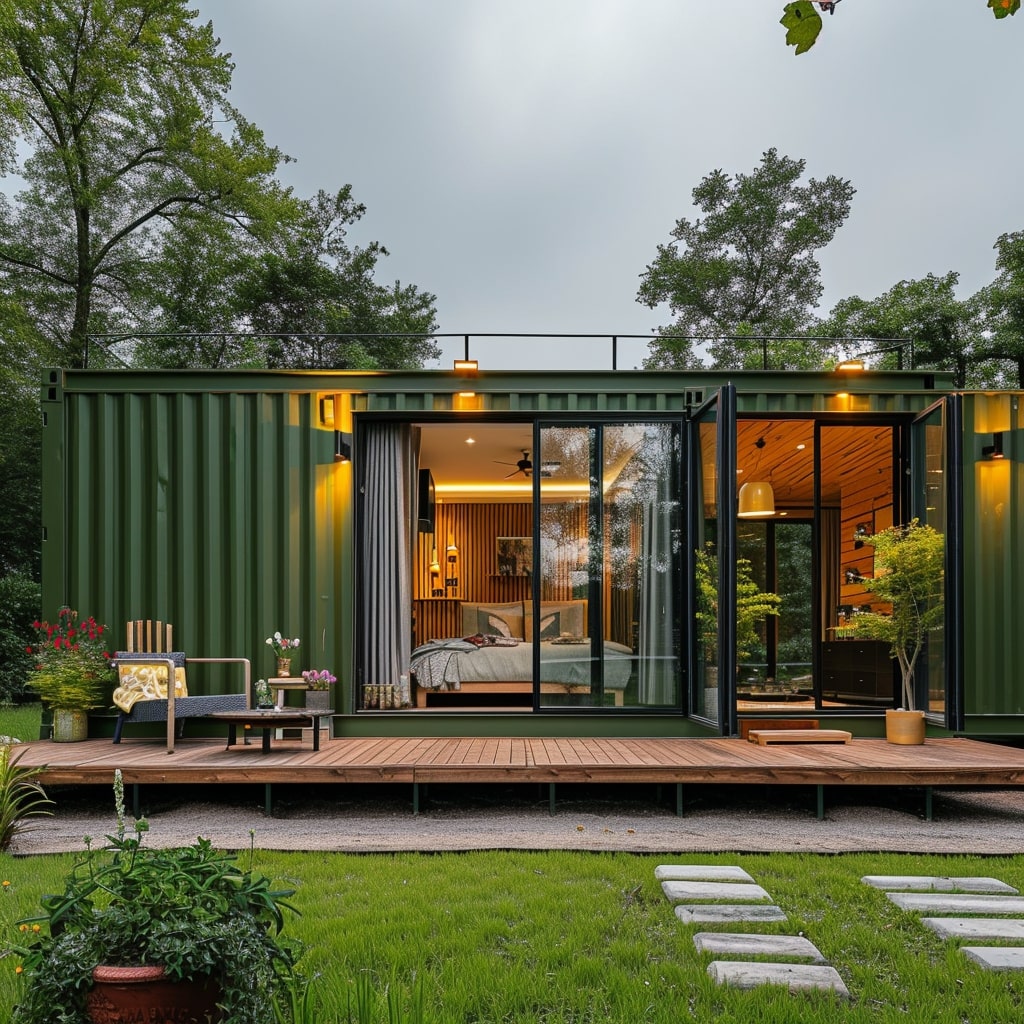
When transporting goods in shipping containers, it’s critical to safeguard against water damage by ensuring proper seal integrity and protecting against water ingress.
Protecting Against Water Ingress
To prevent water from entering a container and compromising cargo, one must prioritize waterproofing measures. The use of durable rubber seals around container doors is a common practice, effectively blocking moisture from seeping in. It’s vital that these seals are inspected regularly for wear and tear to maintain a watertight environment. Caulking also serves as a secondary barrier, filling in any gaps that might allow water ingress.
Seal Integrity for Secure Transport
Ensuring seal integrity is fundamental for secure transport. Seals must be checked for leakage before departure to avoid water damage. Special attention should be given to the container’s seams and the condition of the caulking, as it can deteriorate over time. Proper maintenance of these seals is crucial as they are the first line of defense against leaks that can lead to extensive water damage of the dry cargo within.
Enhanced Features and Modern Upgrades
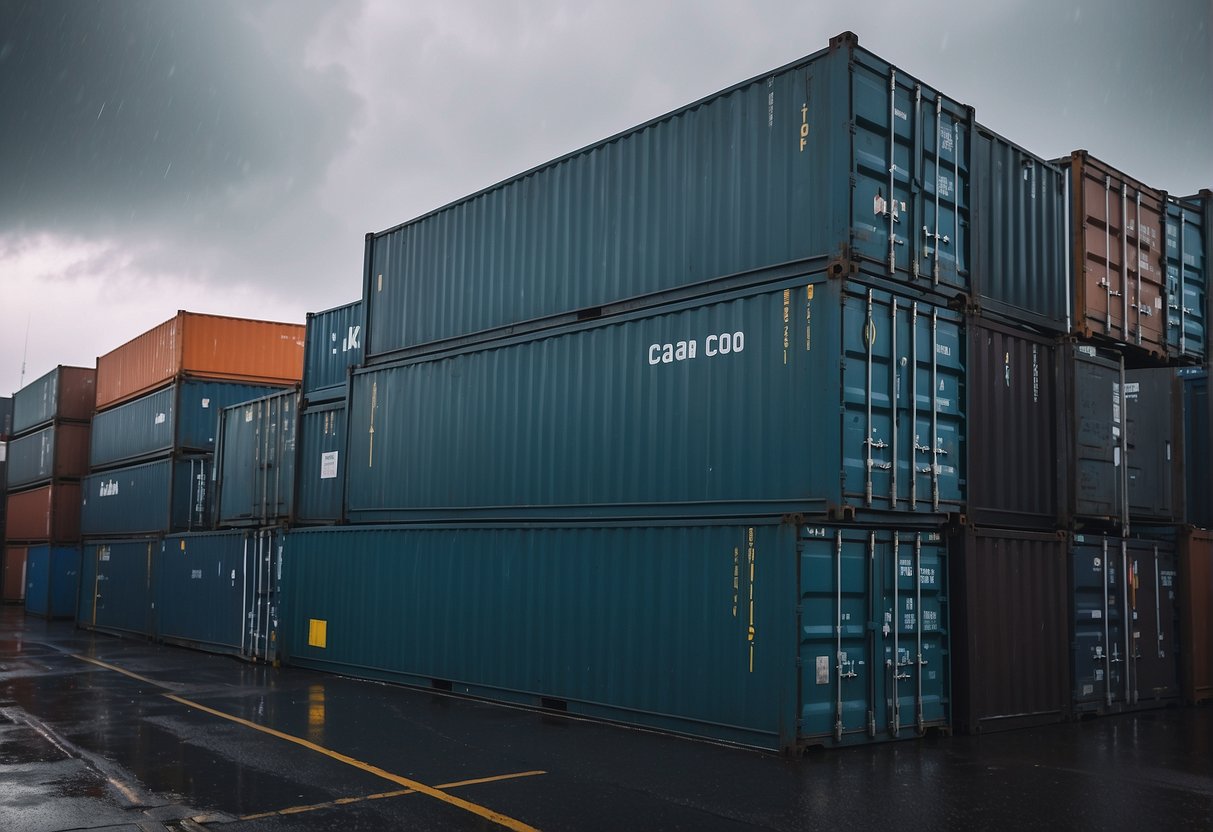
Shipping containers have evolved with new technologies to become more resilient and sustainable. Manufacturers focus on ensuring containers are not only watertight but also airtight and eco-friendly. This ensures that the goods inside are kept in optimal conditions, conducive to both longevity and ecological responsibility.
Airtight Containers
Modern shipping containers are designed with tightly sealed doors and a watertight seal to improve their resilience against water ingress and humidity control. These improvements have made containers capable of protecting sensitive cargo from the external environment. Here is a brief overview:
- Seal Quality: High-grade rubber gaskets provide an airtight seal.
- Structure: Reinforced steel doors equipped with heavy-duty, marine-grade locking mechanisms.
Eco-Friendly and Sustainable Options
Today’s market offers affordable, eco-friendly shipping container options. Their sustainability is shown through:
- Materials: Use of recycled materials in construction.
- Reusability: Adaptability for alternate uses post-shipping, substantially lowering carbon footprints.
By focusing on sustainability, not only does the shipping industry contribute to environmental conservation, but it also provides more versatile and affordable solutions for various uses.
External Conditions and Their Effects

When considering the robustness of shipping containers against the elements, rainfall and snow, along with exposure to saltwater and sunlight, can significantly influence their condition.
Influence of Rainfall and Snow
Rain and snow are primary concerns for shipping containers used in areas prone to precipitation and cold weather. Continuous rainfall can lead to the accumulation of water on container surfaces, potentially testing the integrity of roofs and seals. Containers are often equipped with durable gaskets around the doors to prevent water ingress, but these can deteriorate over time. Regular maintenance, including inspecting and replacing worn gaskets, is essential for preserving waterproof qualities during exposure to rain and snow.
Impact of Saltwater and Sun
Shipping containers at sea are constantly exposed to saltwater, which can accelerate corrosion, particularly where paint has been compromised. The prolonged effect of the sun, with its UV radiation, can degrade exterior surfaces, making them more susceptible to rust. To mitigate these effects, the use of high-quality, marine-grade paint on container exteriors is vital for creating a barrier against these elements. Additionally, the placement of containers to minimize direct sun exposure and the inspection for saltwater-induced corrosion are critical steps to maintain their waterproof status.





